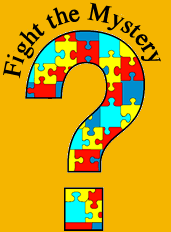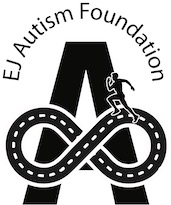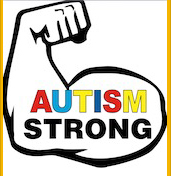          |
||
    |
EJ Autism Foundation In The News: A second
wind
Decades after the first boom in marathons, charity runners are adding a new energy By JOHN HANC STAFF WRITER  In 1998, Frank Arcuri's brother Andrew decided to run the New York City Marathon as a member of Fred's Team, the marathon fundraising group associated with Memorial Sloan-Kettering Cancer Center. The team is named in honor of New York City Marathon founder Fred Lebow, who died of brain cancer in 1994. Frank went into the city that day to watch the race and cheer on his brother. "When I saw Andy doing it, the sense of pride he had, the camaraderie with the people on his team, I was taken in by the whole thing," he says. In 1998, Frank Arcuri's brother Andrew decided to run the New York City Marathon as a member of Fred's Team, the marathon fundraising group associated with Memorial Sloan-Kettering Cancer Center. The team is named in honor of New York City Marathon founder Fred Lebow, who died of brain cancer in 1994. Frank went into the city that day to watch the race and cheer on his brother. "When I saw Andy doing it, the sense of pride he had, the camaraderie with the people on his team, I was taken in by the whole thing," he says.
At Bay Shore High School, Frank had played football and baseball, but he admits that "when it was time to do laps, I hid." Still, he was sufficiently motivated by what he saw of Fred's Team and the marathon that he decided to attempt the 26.2-mile distance himself. He recruited another brother, Rich, and, along with Andrew, the three Arcuris began to raise money and train together for the 1999 NYC Marathon. The fundraising part wasn't hard for Frank, 47, a general contractor who supervises major construction projects in the city. "I have a lot of contacts, and I figured I should be able to tap these guys for a few dollars," he said. "They were very generous." They continue to be. Six years and 19 marathons later, the Arcuris --- all of whom still reside in the Bay Shore-Bright-waters area --- have raised an estimated $60,000 for Fred's Team and, more recently, for Team in Training, the marathon fundraising arm of the Leukemia and Lymphoma Society. As such, the three brothers are part of a trend that has transformed both fundraising and marathon-running. No loneliness here While they didn't raise money for today's race, the Arcuris will be part of the field of 35,000, wearing the purple singlets of Team in Training and running .with other members they have trained with, raised funds with and bonded with, in a way that belies the stereotype of the self-absorbed long-distance runner. The premise is simple: You raise a certain amount of money (for Team in Training, the average raised per runner is $3,700 to $4,000) and, in turn, you get coaching and the opportunity to participate in group training runs. In addition, the organizations will pay for your travel to designated marathons in other cities. For some, marathon fundraising represents a way to pay tribute to loved ones (in May's Long Island Half Marathon, for example, 26-year-old twins Johanna and Janese Decal wore shirts that read "This One's For Mom," in honor of Gladys Decal, who had ovarian cancer). For others, the motivation is fellowship with like-minded people. For still others, it's a way to get in shape. "You feel like you're making a difference in your life, but also helping someone else," says Carmen Cruz, a 40-year-old mother of two who joined Team in Training in 2002 and is now a coach. Whatever the motivations, the concept has clicked: Since its inception in 1986, Team in Training has raised $600 million for the Leukemia Society, and helped remake the face of marathon running. Twenty nine years ago, when the New York City Marathon first moved outside of Central Park and into city streets, the field of 2,088 was considered part of what was then called "The Running Boom." The majority were white, male professionals --- lawyers, physicians, educators --- who had been inspired by, among other things, the gold medal-winning performance of a Yale-educated lawyer named Frank Shorter in the 1972 Olympic marathon. (Shorter himself finished second in the '76 NYC Marathon behind another Running Boom icon, Bill Rodgers.) Two decades later, the influx of the charity marathoners from Team in Training and other organizations has given marathoning a second wind, expanding the fields of major races around the country and shifting the demographics of the sport. The charity runners are what analyst Ryan Lamppa calls "the driving force behind the Second Running Boom." In the past 25 years, he notes, the number of marathon finishers in the United States has grown from 120,000 in 1980 to 420,000 last year. In 1980, only 10 percent of those finishers were women; last year, 40 percent of those who crossed a marathon finish line in the United States were female. More women, more dollars "That influx of women is tied to the charities," says Lamppa, a researcher for Running USA's Road Running Information Center in Santa Barbara, Calif. "Women tend to join these groups more than men. They are more attracted to the social and charitable aspects of doing a marathon. And they tell their friends about it, and it's a huge snowball effect." Nationally, Team in Training now has 35,000 participants. In some marathons, such as last month's Nike Women's Marathon in San Francisco, team members account for almost one-third of the field (in the case of the Nike race, 4,100 out of 15,000 finishers were Team in Training runners). Locally, the Nassau-Suffolk Team in Training chapter has 125 runners who have actively been involved in fundraising, running marathons this fall and winter in Chicago, Washington, D.C., and (in January) Disney World, as well as San Francisco and New York. With their emphasis on fund-raising over finish times, the charity runners have sparked the ire of some running purists, who say the marathon has been cheapened. In stark contrast to the past, when a runner attempted 26.2 miles only after years of training and competition at other distances, many of the charity runners start training for marathons without any foundation in the sport. "There are people who say that the marathon is not a walk in the park, and that you should 'pay your dues,' before you attempt one," Lamppa says. Still, he welcomes the newcomers. "I'm glad they're in the sport," he says. "Would you rather have them doing. this, or sitting at home watching TV? Plus, they're doing it for a good cause. How can you argue with that?" Bea Huste-Petersen is a notable exception to this. In 1989, Huste-Petersen ran the New York City Marathon in 2 hours, 45 minutes --- a national-class performance. Married to Pat Petersen, a Ronkonkoma native who competed in the 1988 Olympic Trials Marathon, Huste-Petersen, 41, retired from running when she went back to school to become a physician's assistant. She and Pat moved to East Islip and started a family. They now have four children, and two of them, sons Jack, 4, and Eric, 3, are autistic. While raising autistic children is tough, Huste-Petersen says, she has been impressed with the care her sons have received, first through home teachers, and now, at the Developmental Disabilities Institute's Young Autistic Program in Medford. "We are really lucky," she says. To help support her sons' school, and to raise awareness about the disorder, Huste-Petersen formed her own charity --- the EJ Autism Foundation. Ultimately, she decided to run the New York City Marathon in support of it. "For me just to knock on your door for money, your response is one way," she says. "When I can say, 'I'm working full-time, I've got four kids, and I'm trying to do the marathon and trying to run it well,' now you've got something interesting." A lot of incentive That interest has generated $5,000 so far, almost all of it from individu al contributions. Huste-Petersen, who is training alone, is determined to run hard. "I'm competitive; I can't just go jog through a race," she admits. "I'm going to run the best I can to make everybody proud of me and proud that they were part of what I did for autism and my children." Based on her half marathon times, Huste-Petersen could break three hours today. Frank Arcuri has no such expectations. The slowest of the brothers, he'll probably cross the finish line in Central Park in about five hours. But his achievement --- and that of all those who log the miles for a cause --- is not measured by a clock. "We'll all feel proud of accomplishing the feat of finishing the marathon, a task in and of itself," Arcuri says. "And at the same time, we know we're making somewhat of a difference. We don't raise millions, but we do our small part." John Hartc is a regular contributor to Newsday. November 6, 2005 Back to News Index  |
|
| Home - Our Mission | Our
Story | EJ
Autism In The News | Donate
Online Fund Raise | Mystery Gear | Increase Awareness | Contact Us | Jigsaw Run 2007 © Website Designed by  ViableVisions.com ViableVisions.com |
||
|
|